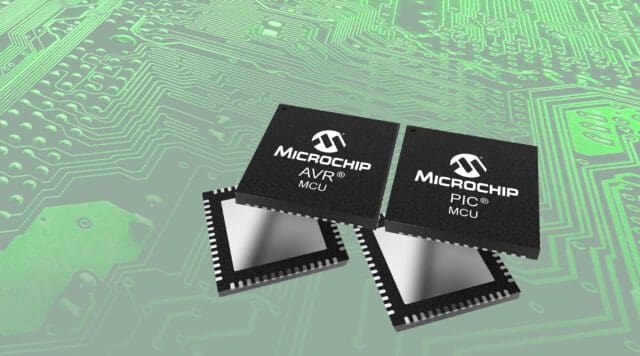Microchip underpins its commitment to PIC microcontrollers® and AVR® 8-bit Announcing Five New Product Families and More Than 60 New Devices
The field of embedded design, dominated in 2022 by smartphones, autonomous vehicles and 5G wireless connectivity, PIC microcontroller families® and AVR® Microchip's 8-bit devices are gaining market share. Over the past 50 years, the market for 8-bit microcontrollers has grown steadily, with Microchip selling one device for every person living in the Western Hemisphere every year. Contributing to this continuing trend, Microchip Technology Inc. today announces five new product families and more than 60 new devices that offer embedded system designers simple solutions to their most common problems.
Designers looking to create innovative designs are turning to Microchip's new families of PIC and AVR microcontrollers for their processing power, their ability to easily communicate with other chips, and their analog peripherals, which are built to be exceptionally configurable without need to introduce changes to the printed circuit board. These devices combine the capabilities of an ASIC and a simple development experience that leverages the capabilities of traditional microcontrollers and allows them to be configured as smart edge chips. Smart peripherals, such as the PIC16F171 family's built-in software-controlled operational amplifier, Multi-Voltage I/O (MVIO), and Analog-to-Digital Converter with Computation (ADCC), add value to applications that would not otherwise use traditional microcontrollers.
The challenge of working with multiple voltage domains is a common situation in on-chip systems that use different supply voltages (eg, when connecting a 5V microcontroller to a 1,8V sensor). This type of system would normally require level-shifting hardware, which increases costs. The MVIO peripheral built into Microchip's newer 8-bit microcontrollers, such as the AVR DD family, allows one microcontroller port to operate at a different voltage than the rest of the microcontroller, thus eliminating the need to add external components.
Some systems demand a level of speed and response time that is difficult to achieve using software-based processing. Core Independent Peripherals (CIPs) available in Microchip's PIC and AVR product range can be programmed with MCC (MPLAB® Code Configurator) to easily connect them together for a hardware processing chain. This allows you to create custom peripherals that eliminate software processing cycle times. For example, a WS2812 LED matrix, which requires its own timing for its correct control, can be easily managed by configuring a super-peripheral made up of a PWM modulator (Pulse-Width Modulator), an SPI interface and the configurable logic cell (Configurable Logic Cell, CLC).
In parallel with the continued growth of the 8-bit PIC and AVR microcontroller market, Microchip continues to be responsive to its customers' long-term needs by maintaining a strong foundation in its product portfolio and support structure. Design is incredibly simple thanks to PIC and AVR microcontrollers, and its support network enables Microchip customers to accelerate time to market. Its 8-bit microcontrollers have compatible pins, allowing a PIC or alternative microcontroller to be selected when higher performance is required or when a customer wants maximum product availability while minimizing redesign requirements.
“PIC and AVR microcontrollers are enormously popular because they are designed to meet our customers' requirements for current and future applications,” said Greg Robinson, vice president of marketing for Microchip's 8-bit microcontroller business unit. “We have also developed a robust supply chain for 8-bit PIC and AVR microcontrollers, the vast majority of which are manufactured in Microchip's own plants. This allows us to control the production process at a level that is rare in the industry.”




